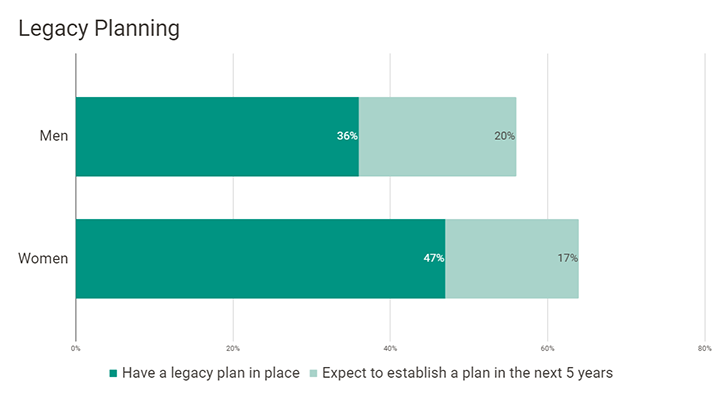Historically, women have given generously of their time and talent, but women’s ability to give financially is a more recent development. As women’s economic power and educational achievement grow, women are influencing household and economic decision-making and transforming the philanthropic landscape like never before. With women now controlling more than half of all U.S. wealth, trends in women’s giving all point up.
“It’s really an exciting time,” says Mary Haeg, development officer for the Catholic Community Foundation of Minnesota (CCF). “We are seeing unprecedented growth in the ability of women to participate financially.”
Different life experiences may lead to differences in giving style. Single women are more likely than single men to give and give more. Married couples give more than singles, and households headed by women are more likely to give and give more than those headed by men.
The Silent Generation (1928-1945)
As a result of a momentous transfer of wealth from previous generations and spouses, many women in their 80s and older now have considerable resources. Some are completely comfortable taking charge, while others, who grew up during the Depression, may not trust that the money will last or feel as though it isn’t theirs to give away.
“If they inherited their wealth, they sometimes feel like it isn’t really their money,” says Beth Halloran, executive vice president and chief advancement officer at St. Catherine’s University. Because these women view themselves as the guardians of inherited wealth, they tend to give smaller amounts to a wide variety of organizations over an extended period of time.
Baby Boomers (1946 – 1964)
It’s a different story for female baby boomers now in their 50s and 60s. These women have spent significant time in the workforce themselves and have frequently contributed to household finances or have always managed their own assets. Rather than viewing themselves as guardians of inherited wealth, boomer women view themselves of owners of earned wealth.
Baby boomer women enjoy collaborating. As with membership in other social activities, such as faith-based groups and book clubs, women outnumber men in giving circles and collective giving groups. Their giving is tied to social networks and to trust in others. They invest in women-centric causes, as they believe giving to women and girls provides the best social returns.
Gen X (1965-1980) and Millennials (1981 – 1995)
Young women, emerging philanthropists now in their 30s and 40s, view work outside the home and control of their own finances as givens. These women also delight in collaborative giving, but their groups are less likely to be women only, and their causes are unlikely to be female-centric. Young women lead the way in crowdfunding and supporting online giving platforms. Generally, they respond to a message of improving the world, but they are more interested in systemic change than in direct service.
“Younger women are less interested in providing a meal and much more interested in knowing why someone must rely on charity to eat,” says Halloran. “They will spend their time serving meals, but their philanthropic dollars are more likely to go upstream.”
Women come to CCF with unique backgrounds, stories, and causes they hold dear. “We don’t make assumptions,” says Haeg. “We really want to listen, learn, and support women as they forge their own paths forward in philanthropy.”

